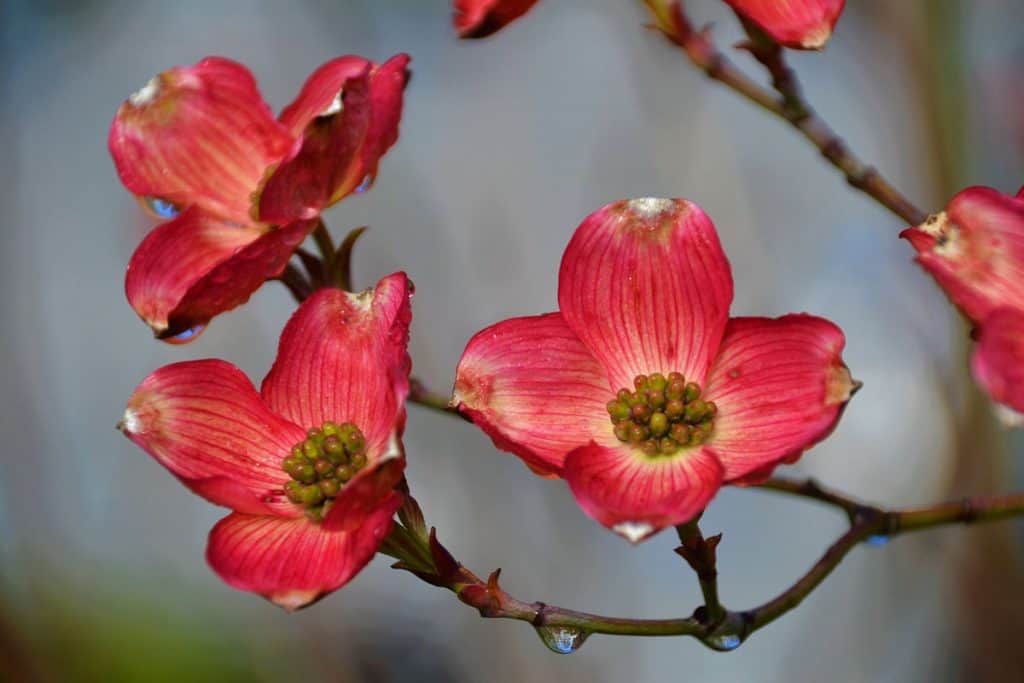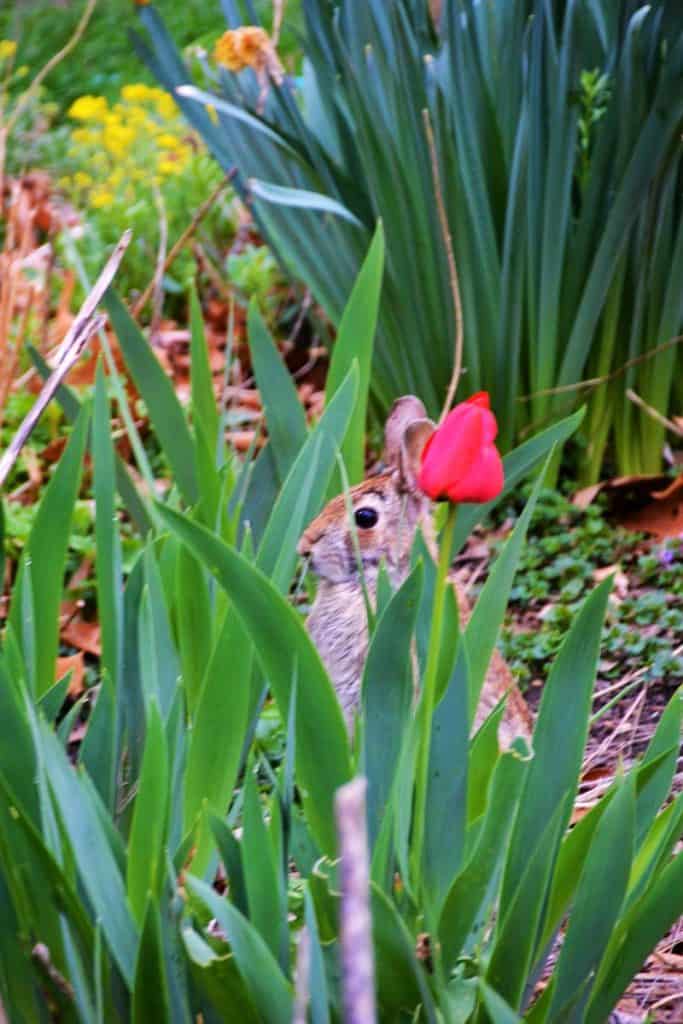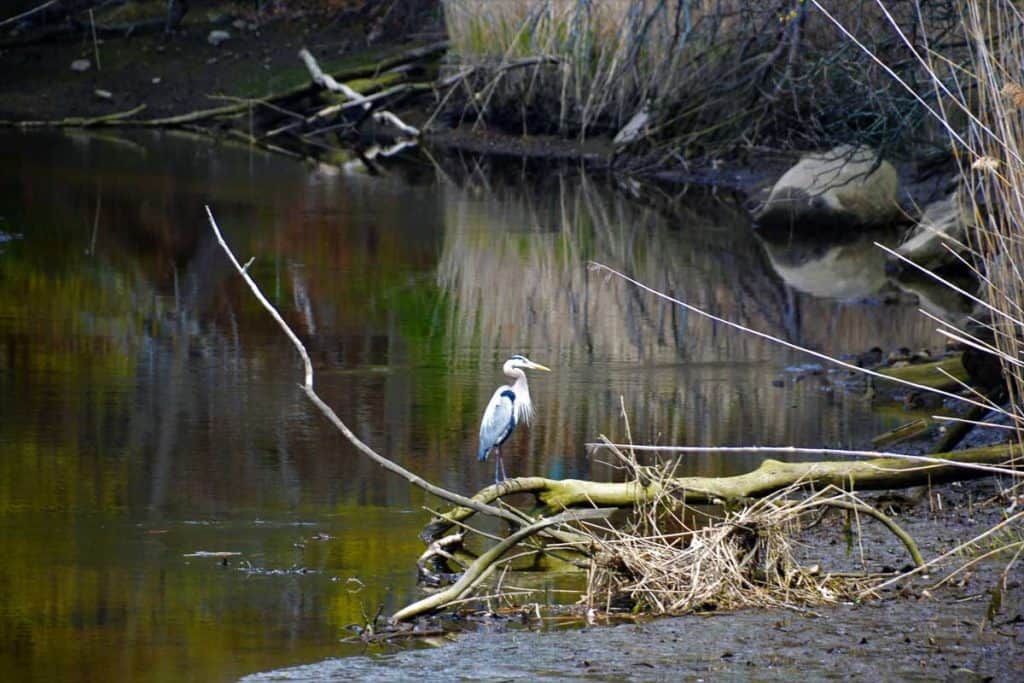Here’s what’s blooming in town this week to make your walks more enjoyable
Sometimes it turns out that when I go out looking for flowers I find birds, and when I go looking for birds I find flowers instead! Birds are migrating northward and building nests, and other animals are also in a frenzy of spring activity. Several times in the last few weeks I have seen a great blue heron (Ardea herodias) fishing on the Saugus River next to the tall tan remnants of last season’s common reed (Phragmites australis).
Large birds like eagles and hawks often use tall trees and other structures as a perch to look for prey, and one afternoon I was amazed to see a hawk perched on an eagle’s wing! The fire department’s monument to Mellon Joy has an American flag flying above it, and the outstretched wing of the brass eagle finial on the flagpole was a perfect perch for overlooking the adjacent river and roadway. The late fire chief Mellon R. Joy died in 1935 fighting a fire on this spot, and the monument was placed here in 1999. I think the hawk I saw was a red-tailed hawk (Buteo jamaicensis) from what I could see of it.
This month’s full moon, the Flower Moon, will be shining tonight for Cinco de Mayo. In some parts of the world a partial lunar eclipse will be visible, but not here. With the rainy weather off and on during a few nights this week, the full moon may seem a bit of a surprise as the waxing moon has often been behind clouds leading up to tonight! Hopefully, we will have a clear view. Other nicknames for May’s full moon are leaf-budding moon, planting moon, and more specifically, corn-planting moon.
Last year’s drought took quite a toll on many plants. Arborvitae (Thuja occidentalis) and dogwood trees (Benthamidia spp.) seem to have been particularly affected, but some are recovering as spring arrives. The pink flowering dogwood (Benthamidia florida, formerly Cornus florida) beside Town Hall is full of blossoms, as is the one next to the Lynnhurst School. Forsythia (Forsythia intermedia) have far fewer flowers than usual this year although they are producing plenty of leaves.
While the bright yellow early season daffodils have largely faded, late season daffodils and narcissus are now in full bloom. All daffodils are in the genus Narcissus, but people commonly refer to the shorter cupped varieties as narcissus while reserving the name daffodil for longer trumpet varieties. Many of these will bloom well into the month of May. There are fascinating new varieties, including split cup and double petalled types, and a wide range of flower colors. The variety ‘Replete’ shown in the picture above might not fit most people’s idea of a daffodil, as there is not a hint of yellow nor does it have the familiar trumpet. The peach and white cup is split into several frilly petals surrounded by a white perianth. Double daffodils with extra petals are becoming very popular with gardeners. They can be all white, all yellow or have a combination of colors. Peach and orange tones are only found in the petals, or trumpet/cup part of the flower, while the sepals or perianth can be white or various tints of yellow.
The other major bulb blooming right now is the tulip (Tulipa spp.). Darwin hybrid tulips are favorites of many people. Unfortunately, they are also a favorite food of wildlife. Several of mine had been eaten before they had a chance to bloom. Rabbits and deer browse on leaves and flower buds, while squirrels, chipmunks and voles tend to prefer eating the bulb underground, and groundhogs like the whole package! The startled rabbit in the photo above was hoping I did not see it trying to hide behind this red tulip in my side yard! Although it and its friends ate quite a few of my tulips, they did leave me a handful at the front of the garden. While repellants can be effective at discouraging animals from eating the tulips, they need to be reapplied after rain. The scent of garlic or eggs or the taste of hot peppers can help discourage animals, or a cylinder of chicken wire or rabbit fence around the clump can also prevent damage.
Editor’s Note: Laura Eisener is a landscape design consultant who helps homeowners with landscape design, plant selection and placement of trees and shrubs, as well as perennials. She is a member of the Saugus Garden Club and offered to write a series of articles about “what’s blooming in town” shortly after the outbreak of the COVID-19 pandemic. She was inspired after seeing so many people taking up walking.







